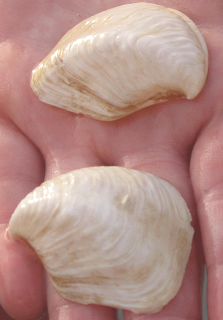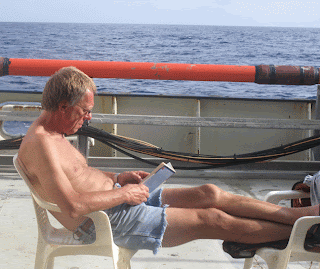Yesterday we got our first
full Monty (as Paul likes to call it). On this cruise a
full Monty means a full set of deployments, usually in this order:
CTD (conductivity, temperature, depth):
WTS (water transfer system -- the McLane pumps):
BC (box core):
GGC (giant gravity core):
CDH (long core -- named after Charles Davis Hollister, hence the CDH):


and the MC (multicore):
The entire
full Monty took us just at 12 hours -- not bad at all.
Of course, this is just the start. We also have to subsample the box core and multicores, squeeze pore waters from the gravity core, filter a lot of water samples, and log the cores (using the Geotek logger).
Last night, we after we completed the full Monty we (of course) decided we needed a little more. So, we took a couple of gravity cores at some interesting (based on the seabeam survey) spots nearby. We got 2 short, but sweet, sections before the coring crew got to rest.
I think we'll have to be very careful in our planning so that the coring crew (and the rest of us!) actually get to rest between sites! Too bad I missed the photo of the crew napping on the lab benches between cores last night -- it was quite a sight! No worries, I'll get it next time!




















































